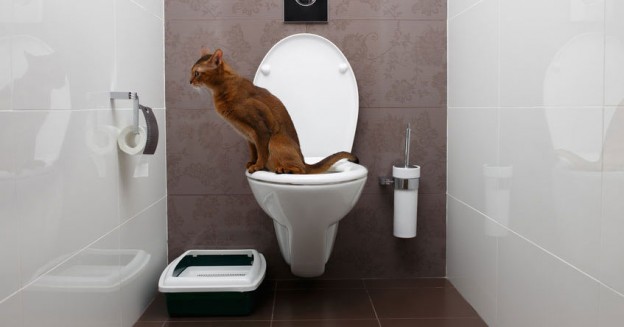How Flushing Animal Waste Down the Toilet Should be Harmful
How Flushing Animal Waste Down the Toilet Should be Harmful
Blog Article
Have you been in search of resources involving Should you flush animal waste down the toilet?

When it pertains to throwing away waste, particularly animal waste, lots of people commonly turn to the hassle-free option of flushing it down the commode. Nevertheless, this seemingly simple solution can have serious repercussions for the atmosphere and public health. In this post, we'll check out why flushing animal waste down the bathroom is a negative concept and provide alternate methods for appropriate disposal.
Introduction
Appropriate garbage disposal is important for keeping ecological sustainability and public health. While it may appear safe to flush animal waste down the bathroom, it can lead to different issues, both for the setting and human health.
Dangers of flushing animal waste
Environmental effect
Flushing animal waste presents harmful microorganisms and virus right into rivers, which can negatively affect marine ecosystems. These pathogens can pollute water resources and damage marine life, disrupting fragile ecosystems.
Public health issues
Animal waste contains hazardous microorganisms such as E. coli and Salmonella, which can posture major wellness threats to human beings. Flushing animal waste down the bathroom can infect water materials, leading to the spread of illness and infections.
Alternatives to flushing
Rather than flushing pet waste down the commode, there are several different disposal methods that are a lot more environmentally friendly and hygienic.
Composting
Composting animal waste is an environmentally friendly method to take care of it. By composting, organic matter is broken down right into nutrient-rich soil, which can be utilized to fertilize yards and plants.
Land fill disposal
Disposing of pet waste in a landfill is another alternative. While not as environmentally friendly as composting, it is a much safer choice to flushing, as it stops the contamination of water resources.
Animal waste disposal systems
There are specialized family pet garbage disposal systems offered that securely and hygienically deal with pet waste. These systems frequently utilize enzymes to break down waste and eliminate smells.
Steps to appropriate pet garbage disposal
To guarantee appropriate disposal of animal waste, comply with these steps:
Scooping and getting waste
Consistently scoop and bag animal waste utilizing biodegradable bags. This prevents waste from infecting the environment.
Utilizing assigned waste containers
Dispose of bagged pet waste in designated waste containers, such as compost containers or garbage dump containers. Avoid flushing it down the toilet in any way prices.
Cleansing litter boxes and pet dog locations frequently
On a regular basis tidy litter boxes and animal areas to prevent the buildup of waste and bacteria. Usage pet-safe cleansing items to preserve hygiene.
Benefits of proper disposal methods
Taking on proper disposal techniques for pet waste supplies a number of benefits:
Minimized environmental pollution
Correct disposal approaches minimize the danger of environmental pollution, protecting rivers and ecological communities from contamination
Reduced threat of water contamination.
By preventing flushing animal waste down the bathroom, the danger of water contamination is significantly lowered, protecting public health.
Boosted hygiene and hygiene
Appropriate disposal methods advertise much better sanitation and hygiene, developing a safer setting for both people and animals.
Conclusion
Finally, flushing pet waste down the toilet is harmful to the setting and public health. By adopting alternative disposal approaches and adhering to appropriate waste management methods, we can reduce the adverse impact of pet waste and add to a cleaner, much healthier world.
What To Do With Dog Poo – The Do's And Don'ts Of Disposing Of Faeces
Dog poo bins
Some councils provide dedicated dog waste bins in popular dog-walking areas that can take dog poo that has been bagged but you can legally dispose of dog waste in any public litter bin, as long as it is securely bagged. This also applies to your wheelie bin at home.
Do not flush
Water companies do not recommend flushing dog faeces down the toilet because certain parasites can survive the water processing treatment and are potentially harmful to humans. You should also never consider flushing dog poo that has been bagged down the toilet as the bags will not break down and instead create severe blockages in the sewage system.
In the woods
The Forestry Commission promotes a ‘stick and flick’ method for dealing with waste in the woods. This means finding a stick and using it to flick any poo from off the path so that it is out of the way of other walkers. You could also bury it as long as it is not in an area where there might be livestock.
Livestock
Parasites found in dog poo can be transmitted to livestock if they inadvertently eat infected faeces that has been left on grazing land. This could result in the death of sheep or abortion in cattle so you should always make sure you pick up your dog’s waste in fields where livestock could be present.

I discovered that blog entry about Why you should never flush dog poop down the toilet while doing a search on the web. Please take a moment to share this blog posting if you enjoyed it. Thank you for being here. Return soon.
Click Here Report this page